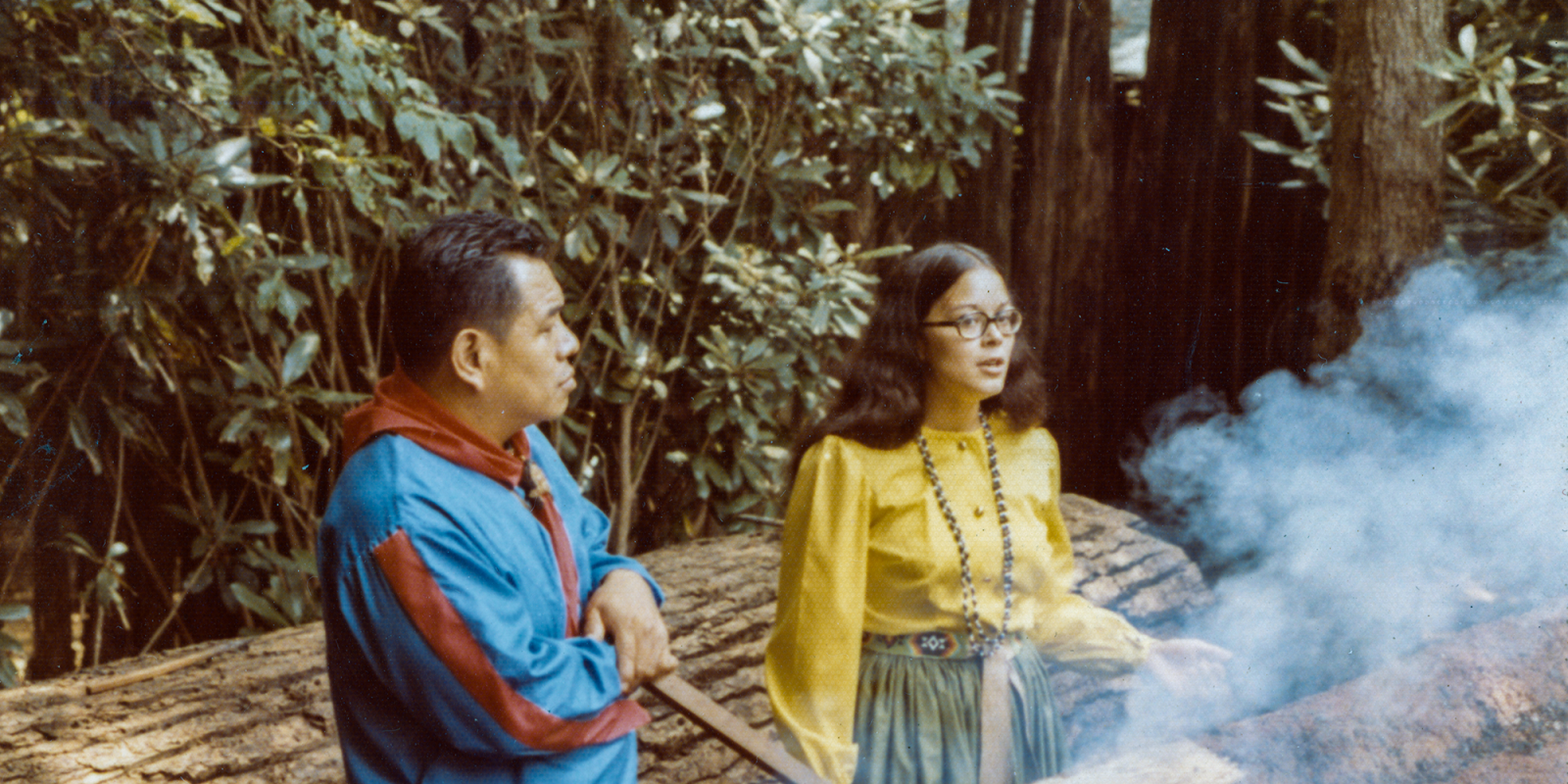During 2020, while COVID-19 was raging across the nation, my tribe, the Eastern Band of Cherokee Indians in Cherokee, N.C., took intense measures early on, shutting down the Qualla Boundary (our tribal lands), implementing mass testing, contract tracing and case isolation. Tribal leaders and elders feel a sense of urgency about preserving the culture and language, as was demonstrated during the worst of the pandemic when Native language speakers were prioritized to receive the vaccine by some tribes.
In the end the Eastern Band of Cherokee Indians handled the pandemic more effectively than many other areas in North Carolina, ensuring elders’ legacies were preserved, including all the tribal knowledge they harbor.
Growing up in western North Carolina I was proud of my culture and saw lots of examples of artistic vision completely expressed. Wood carvers Amanda Crowe, Goingback Chiltoskey, John Julius Wilnoty, and Johnson Owle, master storyteller Jerry Wolfe, potter Amanda Swimmer, basket maker Alice Walkingstick and beader Martha Owl illustrated that Cherokee people were creative and talented.
Some elders learned these skills not at home, but in a boarding school setting. (From 1880 to 1954 the U.S. Indian Service operated the Cherokee Boarding Schools at Cherokee, N.C.) They survived their boarding school experience and came home to make a living using their skills.
‘Creating an environment where respect of elders is prized sets the stage for learning and fosters receptive young people.’
Tribally supported businesses were created to help preserve the Cherokee culture. These included the Museum of the Cherokee Indian, the Qualla Arts and Crafts Cooperative and the Oconaluftee Indian Village. The Cherokee Indian Fair was another way to highlight the creativity of the people living and working in the mountains of North Carolina.
New Generations Continue Old Traditions
Today citizens of the Qualla Boundary celebrate a new generation of artists, storytellers and others who cook, laugh, tell stories and remember when life was more tied to nature and the cycles of the year.
I think creating an environment where respect of elders is prized sets the stage for learning and fosters receptive young people. Knowing the history of one’s tribe, the obstacles they have faced and overcome gives young people a sense of pride and identity that can provide a protective shield against the destructive elements in the world that can make people feel lost and adrift.
My first job was at the Oconaluftee Indian Village in Cherokee, North Carolina. I was 15 and was sent first to the seamstress to be fitted for my work outfit. This included moccasins made in the factory down the road, a gathered skirt and loose top, completed with a beaded belt and Job’s tears necklace. The setting was a recreated ancient Cherokee village. It was outside, shaded with trees and greenery, with sawdust paths leading to various stations where elders were demonstrating crafts such as beadwork, wood carving and the use of blowguns.
I have had many jobs since that time, but I think of the Village with great fondness. My job was to ferry groups of visitors from one station to the next, introducing the elders and explaining briefly about the materials being used and how they crafted their works of art. I read about history from the reports of early explorers and settlers. I also picked up information from following my coworkers around and listening to how each one brought a slightly different approach to the information we were supposed to convey.
But the best part was hanging around the elders as they quietly showcased their brilliance and artistry. I didn’t realize it at the time, but I was meeting local celebrities. These men and women created belts, baskets, pots and sashes, which were available for purchase at the shop down the hill.
‘I see another woman leader who helped reestablish her tribe, creating traditions where none existed before.’
After learning the basics of the task required of me, I could visit the stations and spend time with the elders, watching, talking and slowly picking up the process. The women all enjoyed visiting, laughing teasing and telling stories. The smoke from cooking fires naturally draws people near and in a way our little group was creating a new village.
I gathered supplies at the nearby craft shop, and they taught me how to do beadwork, basketry and even shoot a blow gun. When I would make some ridiculous statement, confident of my facts, their shoulders would shake in silent laughter at my foolishness. They were fun to be around, lively, smart and possessed the skills and the ability to imagine something and then create it.
Indigenous Elders Continue to Pass Along Knowledge
Now as I work in the aging field, I see a Comanche woman who retired as a nurse continuing to give back to her community by teaching language classes. I see another woman leader who helped reestablish her tribe, creating traditions where none existed before. Learning dances from other Puebloans who shared what they knew.
There have been so many attempts to silence these voices. And yet they are still being heard, still making, still believing in the need to share what they know, so the way will be a little easier for the next generation.
Rebecca Owl Morgan is a member of the Eastern Band of Cherokee Indians and project coordinator for the National Indian Council On Aging in Albuquerque, N.M.
Photo (top): Rebecca Owl Morgan explains the process of canoe construction to visitors at the Oconaluftee Indian Village. Image courtesy of Gwen Bushyhead.













